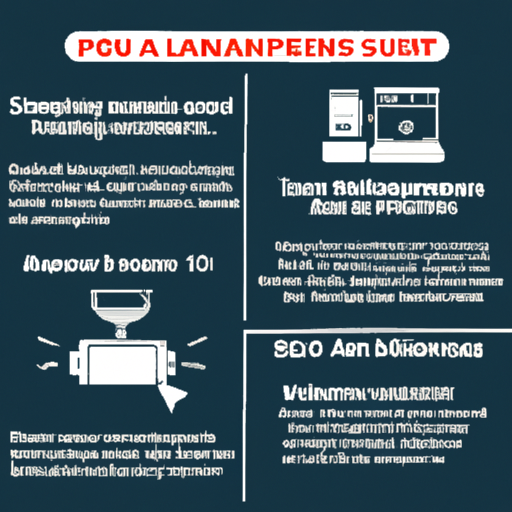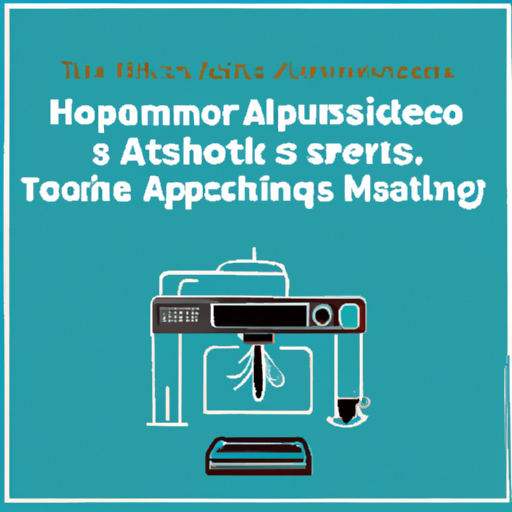So you just bought a super automatic espresso machine and you’re super excited to start making delicious coffee at home. But what happens when something goes wrong? Don’t worry, I’ve got you covered! In this article, I’ll give you some common troubleshooting tips for super automatic espresso machines, so you can fix any issues that may arise and get back to enjoying your perfect cup of coffee. Let’s dive in!
One of the most common issues with super automatic espresso machines is a clogged brew group. This can happen if the coffee grounds get stuck in the group head and prevent the water from flowing properly. To fix this, you can try cleaning the brew group by removing it and rinsing it thoroughly with warm water. This should remove any coffee residue and unclog the group head.
Another common problem you might encounter is a leaky machine. If you notice water leaking from your super automatic espresso machine, it could be due to a loose hose or a faulty gasket. To fix this, make sure all the hoses are properly connected and tightened. If the gasket is damaged, you may need to replace it. Remember to consult your machine’s manual or contact the manufacturer for specific instructions.
Lastly, if your espresso shots are coming out weak or watery, it could be a sign that your coffee grind size is too coarse. Adjusting the grind size can make a huge difference in the taste and strength of your coffee. Try grinding your beans finer and see if that improves the quality of your shots. You can also experiment with different coffee blends to find the one that suits your taste preferences.
In this article, we’ve covered just a few common troubleshooting tips for super automatic espresso machines. From cleaning the brew group to fixing leaks and adjusting the grind size, these tips should help you resolve some of the most common issues you may encounter. Remember, if you’re ever unsure or need further assistance, it’s always best to consult your machine’s manual or reach out to the manufacturer for support. Happy brewing!

Common Issues with Super Automatic Espresso Machines
Super automatic espresso machines are a convenient and popular choice for coffee lovers. These machines are designed to automate the entire process of making espresso, from grinding the beans to frothing the milk. However, like any other appliance, super automatic espresso machines can encounter some common issues. In this article, we will discuss three common problems that you may encounter with your super automatic espresso machine: machine not turning on, machine not producing coffee, and machine not dispensing milk. We will also provide troubleshooting tips to help you resolve these issues.
Machine Not Turning On
One of the most frustrating problems you may encounter with your super automatic espresso machine is it not turning on. This can be caused by a variety of factors, but the most common ones are a faulty power connection, an off power switch, or a tripped circuit breaker. Here are some troubleshooting tips to help you resolve this issue:
-
Check Power Connection: Ensure that the machine is properly plugged into a functioning power outlet. Make sure that the power cord is not frayed or damaged in any way.
-
Ensure Power Switch is On: Double-check that the power switch on the machine is turned on. Sometimes, people inadvertently turn off the power switch, which prevents the machine from turning on.
-
Reset Circuit Breaker: If the machine still doesn’t turn on after checking the power connection and power switch, check the circuit breaker in your home. If it has been tripped, reset it and try turning on the machine again.
Machine Not Producing Coffee
Another common issue with super automatic espresso machines is when it fails to produce coffee. This can be caused by various factors, such as a dirty or clogged machine, insufficient water supply, or incorrect grinder settings. Here are some troubleshooting tips to help you resolve this problem:
-
Clean and Descale the Machine: Regular cleaning and descaling are essential for maintaining the optimal performance of your super automatic espresso machine. Follow the manufacturer’s instructions for cleaning and descaling, and ensure that the brewing unit, grinder, and coffee spout are free from any residue or buildup.
-
Check Water Supply: Ensure that the water tank is filled with fresh and clean water. Sometimes, the machine may not produce coffee if there is insufficient water in the tank. Also, check that the water tank is properly inserted and the water inlet valve is not blocked.
-
Inspect Grinder Settings: The grinder settings play a crucial role in producing coffee with the desired strength and flavor. If the grinder settings are too fine, the machine may struggle to extract the coffee properly. Experiment with different grinder settings to find the right balance for your preferences.
Machine Not Dispensing Milk
If your super automatic espresso machine has a milk frother and it is not dispensing milk properly, it can be frustrating, especially if you enjoy milk-based espresso drinks like cappuccinos or lattes. The most common reasons for this issue are loose connections, a dirty frother nozzle, or incorrect milk temperature settings. Here are some troubleshooting tips to help you resolve this problem:
-
Check Milk Frother Connections: Ensure that all the connections between the milk frother and the machine are secure. Sometimes, loose connections can prevent the milk from being dispensed properly. Check for any visible damage or leaks in the tubing.
-
Clean Milk Frother Nozzle: Milk residue can accumulate on the frother nozzle over time, affecting its performance. Clean the frother nozzle regularly using warm, soapy water or a designated milk frother cleaner. Ensure that there is no clog or blockage in the nozzle.
-
Adjust Milk Temperature Settings: Some super automatic espresso machines allow you to adjust the temperature of the milk froth. If the milk is not being dispensed at the desired temperature, check the machine’s settings and adjust them accordingly.
Common Error Messages and Solutions
In addition to the common issues mentioned above, super automatic espresso machines may display error messages that indicate specific problems. Here are some common error codes and their solutions:
Error Code: E01 – Water Tank Empty
If your machine displays error code E01, it means that the water tank is empty. To resolve this issue, simply refill the water tank with clean water and ensure that it is properly inserted.
Error Code: E02 – Coffee Beans Empty
Error code E02 indicates that the coffee bean container is empty. To fix this issue, refill the container with fresh coffee beans. Ensure that the container is properly inserted and not clogged with any residue.
Error Code: E03 – Drip Tray Full
If your machine displays error code E03, it means that the drip tray is full. Remove the drip tray, empty it, and clean it thoroughly. Make sure that the drip tray is properly reinstalled before using the machine again.
Tips for Proper Maintenance and Cleaning
Regular maintenance and cleaning are essential to keep your super automatic espresso machine in optimal condition. Here are some tips to help you properly maintain and clean your machine:
-
Regularly Clean Coffee Grounds Container: Empty and clean the coffee grounds container after each use. Avoid leaving coffee grounds in the container for an extended period, as they can become stale and affect the flavor of your espresso.
-
Descale the Espresso Machine: Descaling helps remove mineral buildup that can affect the performance of your machine. Follow the manufacturer’s instructions for descaling, and use a descaling solution recommended for super automatic espresso machines.
-
Clean Milk Frother After Each Use: After using the milk frother, flush it with hot water to remove any milk residue. This will prevent clogs and maintain the optimal performance of the frother.
When to Seek Professional Repair
While many common issues can be resolved through troubleshooting and regular maintenance, there may be instances when it is best to seek professional repair. Here are some signs that indicate you should consult a professional:
-
Persistent Issues Despite Troubleshooting: If you have followed all the troubleshooting tips and the problem persists, it may indicate a more complex issue that requires professional attention.
-
Visible Damage or Leaks: If you notice any visible damage or leaks in your machine, it is best to have it inspected and repaired by a professional. Continued use of a damaged machine can lead to further issues and safety hazards.
-
Faulty Electrical Components: If you suspect any electrical issues with your super automatic espresso machine, such as sparks or unusual noises, it is crucial to have it examined by a professional technician.

Additional Tips for Optimal Performance
To ensure optimal performance and enjoy the best possible espresso from your super automatic machine, here are some additional tips:
-
Use Freshly Roasted Coffee Beans: For the best flavor and aroma, use freshly roasted coffee beans. Avoid storing beans for extended periods, as they can become stale and lose their flavor.
-
Adjust Grinder Settings for Fineness: Experiment with different grinder settings to find the right coarseness or fineness for your desired espresso strength.
-
Regularly Clean and Lubricate Brewing Unit: The brewing unit is an essential component of your super automatic espresso machine. Regularly clean and lubricate it following the manufacturer’s instructions to maintain its performance.
Conclusion
Super automatic espresso machines offer convenience and the ability to enjoy barista-quality espresso at home. However, these machines can encounter common issues such as not turning on, not producing coffee, or not dispensing milk. By following the troubleshooting tips provided in this article, you can resolve these issues and continue enjoying delicious coffee without interruptions. Remember to also perform regular maintenance and cleaning to keep your machine in optimal condition.
